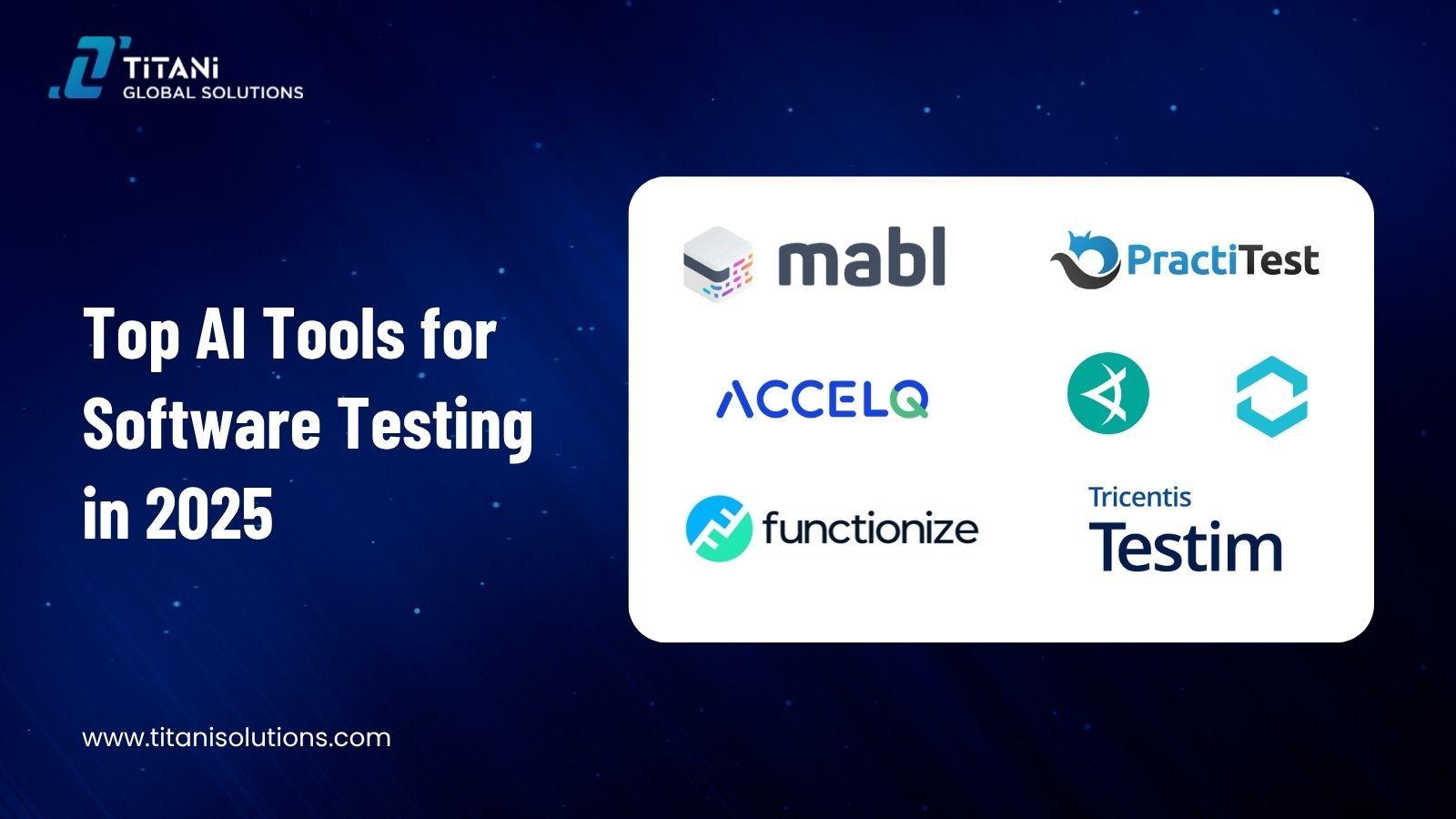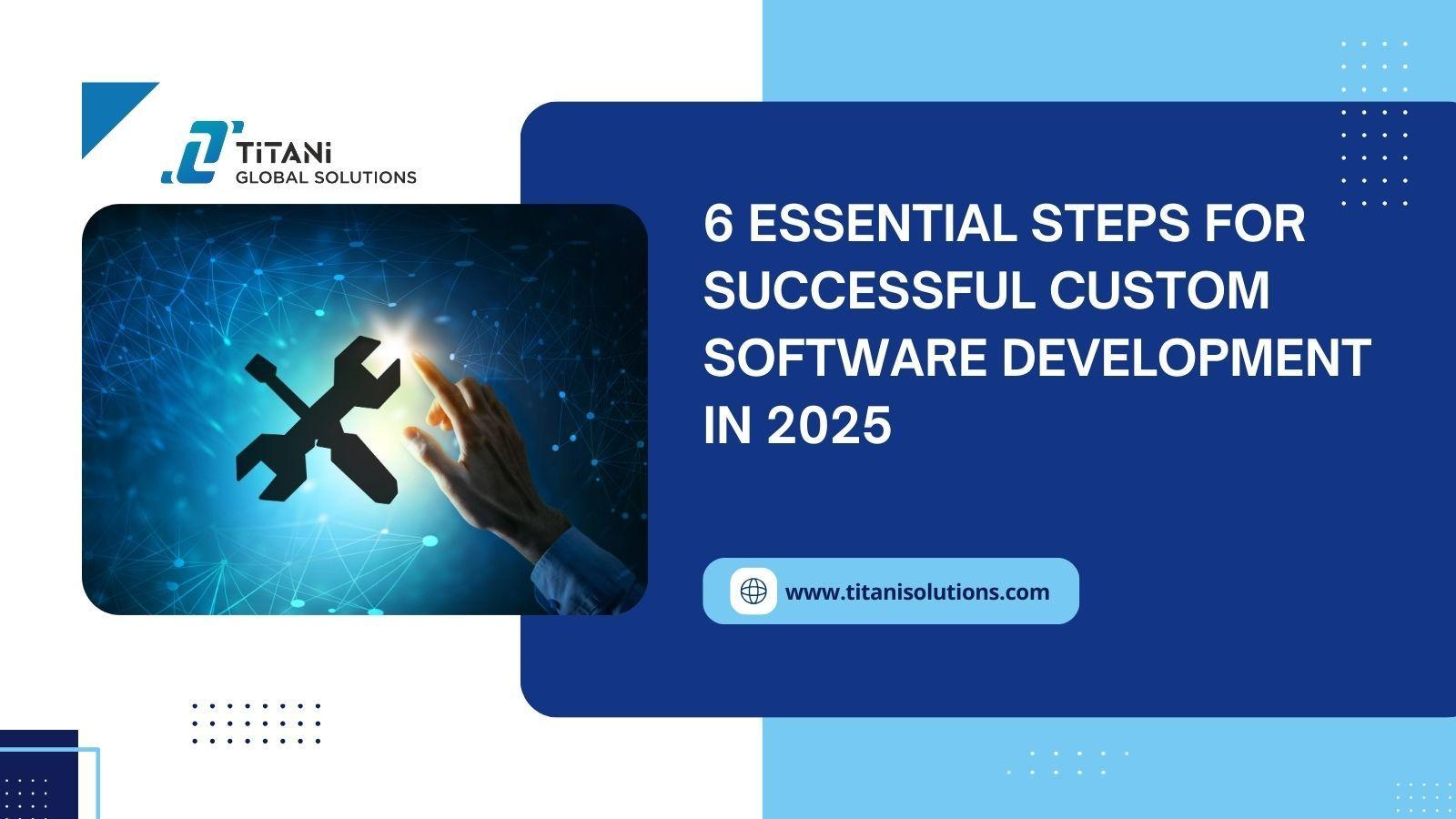Summary for Decision-Makers
Manual-only QA can’t keep pace with 2025 release cycles. AI-assisted testing now delivers faster cycles, broader coverage, and fewer production bugs by auto-generating tests, self-healing brittle scripts, and running 24/7 in CI/CD.
This guide ranks the 7 best AI QA tools across four needs: UI/visual validation (Applitools, Testim), test case generation (Functionize, Mabl), continuous testing/DevOps (ACCELQ), and analytics & defect prediction (ReportPortal, PractiTest+AI).
What to look for: accuracy, self-healing, CI/CD integration, fit with your tech stack, auto test-data generation, and multi-device coverage.
The payoff: teams report ~50% faster execution, ~70% lower test maintenance, and significant drops in post-release defects—freeing QA to focus on exploratory testing and product quality while cutting time-to-release and overall QA costs.

In today’s fast-moving software development environment, manual testing often struggles to keep up. Human-only QA processes can lag behind rapid release cycles, allowing bugs to slip through and slow down delivery.
These limitations are driving QA teams to embrace AI testing tools as essential allies. AI-driven testing can run thousands of checks at speed, adapt to complex systems, and catch issues that traditional methods might miss.
According to Gartner, by 2027, over 70% of professional developers will use AI-powered coding tools. Similarly, by 2026, more than 80% of enterprises will have deployed generative AI applications or APIs in production.
At Titani Global Solutions, we’ve seen how AI testing tools help teams test faster and with better accuracy. In this post, we’ll explain why AI is changing software testing and introduce some of the best AI QA tools in 2025. These tools speed up testing without lowering quality. They can create test cases automatically, find bugs, and even fix broken tests on their own.
Why AI Tools Are Changing the QA Game
Many QA teams face common challenges with traditional testing and automation. These include slow execution times, limited test coverage, and high resource demands. We discussed these issues in How AI is Revolutionizing Quality Assurance (QA).
Manual testers can only cover so many scenarios, and even scripted tests often break when the application changes. These bottlenecks cause critical bugs to slip through or delay releases.
AI-driven testing directly addresses these challenges:
Faster Execution & Maintenance: AI-powered testing tools dramatically speed up test runs and reduce upkeep. For example, imagine a retail app that renames a “Submit” button after a UI redesign. Traditional scripts would break, but a self-healing test framework automatically detects the new button ID and updates the locator. Tests keep running smoothly, eliminating hours of manual fixes. In one case, applying such AI-driven maintenance cut test upkeep by about 70% and boosted execution speed by 50%. Many top AI QA tools let engineers write tests in plain language and execute them in parallel (even in the cloud), effectively enabling 24/7 runs. This led to faster deployments and minimized time spent on test script maintenance.
Better Coverage & Intelligent Bug Detection: Next-generation AI tools not only find bugs faster, but they also cover more ground. By automatically analysing code and user flows, they can create new test cases quickly. This helps find edge-case scenarios that a manual suite might miss. An AI engine could run many loan-calculation tests for a banking app. It could discover a hidden interest-rate bug before the app releases. AI also learns from history: by scanning past defects and change logs, it flags likely trouble spots. Predictive analytics can sift through historical bug data to prioritize tests on the riskiest components. By applying AI-driven analysis, a telecommunications company significantly improved the speed and accuracy of its testing processes. They reduced post-release bugs by 30%. They also found vulnerabilities, like SQL injection, early. AI can execute tests concurrently and continuously throughout the day. This increases coverage a lot. As a result, there are fewer blind spots and better detection overall.
Resource Efficiency: AI testing tools act like round-the-clock assistants by taking on tedious QA chores. Regression suites, multi-device checks, and test-data setups can all be automated. Consider a team that runs an overnight AI-driven test across multiple platforms and then wakes up to a prioritized bug report with no one burning the midnight oil. This nonstop 24/7 testing is extremely cost-effective: AI runs continuously with no human intervention, speeding releases and cutting labor costs. Freed from routine work, testers focus on creative exploratory testing. In short, top AI QA tools handle the grunt work day and night, boosting productivity and quality with fewer resources. Together, these strengths show why the best AI QA tools are quickly becoming must-haves for modern QA teams.
Next, let’s discuss how to choose the right AI tool by looking at key features that matter.
Criteria for Selecting AI Testing Tools
The capabilities of AI QA tools can differ widely depending on design, focus, and integration support. Based on our decade of QA consulting, we recommend evaluating tools against a few critical criteria:
Accuracy: The AI’s predictions and validations must be reliable. A good tool should minimize false positives (flagging non-issues) and false negatives (missing real bugs). Accuracy builds trust in the tool. (For example, an AI that correctly identifies visual differences or failure patterns 99% of the time will dramatically boost your team’s confidence.)
Self-Healing Capability: Prioritize tools with self-healing test automation features. This means the tool can automatically adjust locators or test steps when the application UI changes, without human intervention. Self-healing AI reduces maintenance overhead – no more scrambling to fix broken scripts after every minor UI tweak. AI tools should track UI changes directly and update scripts without manual effort.
CI/CD Support: In 2025, continuous testing is a must. Ensure the AI tool integrates smoothly with your CI/CD pipeline (Jenkins, GitLab CI, Azure DevOps, etc.) for automated test runs on each build. Native plugins or CLI support to trigger tests and report results in the pipeline are extremely helpful. Good CI/CD integration means tests can run heedlessly in containers or cloud environments and post results back to your dashboards.
Integration with Tech Stack: Check that the tool works with your existing QA and development tools. This includes support for frameworks and languages (e.g., Selenium/WebDriver, Appium, JUnit), as well as integration with test management (Jira, TestRail, PractiTest) and bug-tracking systems. For instance, Applitools easily plugs into Selenium/Cypress tests, and many tools can log bugs directly to Jira. A tool that fits into your current workflow will be adopted more readily by the team.
Automatic Test Data Generation: Some advanced AI testing tools can create synthetic test data or generate test input variations automatically. This feature is valuable if your tests need lots of data (e.g., multiple user profiles, transactions, etc.). AI-based data generation ensures a wider variety of test scenarios without manual data prep. It can also help with anonymizing or creating production-like data for testing.
Multi-Device & UI Testing: If cross-browser or cross-device support is important (and it usually is for web/mobile apps), ensure the tool can handle it. AI visual validation tools like Applitools use computer vision to validate UI consistency across devices. Multi-platform support means the tool can test web, mobile, and even desktop apps in one package. If you need to verify responsive designs or mobile app flows, look for AI tools with built-in device clouds or easy integration to services like BrowserStack or frameworks for mobile testing.
By weighing tools against these criteria, you’ll narrow down which AI solution aligns with your needs.
Top AI Tools for Software Testing in 2025
In the rapidly evolving landscape of AI QA, a few tools have risen to the top. Below, we group the top AI testing tools of 2025 by their primary focus area, highlighting why they’re noteworthy:

1. UI/UX Testing
Applitools Eyes: Applitools is the industry leader in visual AI testing. It uses sophisticated computer vision to catch visual bugs and layout issues that traditional tests often miss. We use Applitools to ensure consistent UI across browsers and devices, crucial for responsive design. Applitools Eyes validates that your app’s visuals (fonts, colors, element positions) remain correct release after release. It’s widely adopted in industries like e-commerce and finance, where a flawless UI is a must. Integration is a strong suit: Applitools easily snaps into Selenium, Cypress, and other frameworks, and its Ultrafast Grid can render screens across multiple browsers/devices in parallel. In short, if pixel-perfect user experience is a priority, Applitools is the go-to solution.
Testim: Testim is an AI-powered automation tool designed to accelerate the creation and maintenance of UI tests. It offers a slick recorder for test authoring and then uses AI (including generative algorithms) to maintain those tests as the app evolves. Testim’s standout feature is its self-healing Smart Locators – when a developer changes the UI, Testim automatically locates the new element or flow, so your tests don’t break. This makes it ideal for agile teams that push UI updates frequently. Testim also supports cross-browser and mobile testing, running tests in parallel on various environments. We’ve found teams can create tests faster with Testim’s intuitive interface and spend far less time on upkeep because the AI handles it. It integrates with CI pipelines and tools like Jira for reporting results, fitting nicely into DevOps workflows.
2. AI-Powered Test Case Generation
Functionize: Functionize is a platform that uses natural language processing (NLP) and machine learning to automate the entire QA lifecycle. One of its hallmark capabilities is allowing testers to write test cases in plain English. You describe a test scenario in simple terms, and Functionize’s NLP engine converts it into an automated test script. This lowers the skill barrier – even non-programmers can define tests. Under the hood, Functionize’s ML models adapt to changes in the application, so tests keep running even as the UI or flows change. It’s a great fit for web applications and integrates well with continuous testing environments (think one-click execution of tests in your pipeline). The tool also provides an Architect Chrome plugin to record user interactions and turn them into AI-maintained tests.
Mabl: Mabl is an AI-driven test automation tool that prides itself on being friendly to the whole team, not just QA engineers. It’s particularly popular among agile and DevOps teams working on web apps. Mabl provides a low-code interface for creating tests (with a recorder and the ability to insert JavaScript for complex logic), and it uses machine learning to automatically detect changes in your application and adjust tests. Mabl covers a lot of ground: you can create functional UI tests, API tests, and even do visual comparisons and basic performance checks in one platform. It also has strong CI/CD integration – you can trigger Mabl tests on deployments and get results in tools like Jenkins or CircleCI. For example, if you commit new code, Mabl can run a smoke test suite and use ML-based regression detection to flag if something likely introduced a bug. The focus is on behavior-driven testing of user journeys, with AI analysing those journeys for anomalies. If you want an all-in-one solution for continuous testing that team members (devs, QA, even product folks) can all use, Mabl is worth a look.
3. Continuous Testing / DevOps
ACCELQ: ACCELQ is an AI-powered codeless test automation platform built for continuous testing in agile environments. We’ve seen many enterprise QA teams embrace ACCELQ because it allows manual testers and business analysts (not just automation engineers) to build robust automated tests with a no-code interface. You can automate web, mobile, API, and even desktop applications in one unified platform, designing tests via a user-friendly UI and natural language steps. From a DevOps perspective, ACCELQ is cloud-based and integrates with CI/CD tools easily, enabling truly continuous automation (tests can run on every build and give instant feedback). For teams with limited coding skills or tight timelines, ACCELQ offers powerful, scalable automation without the hassle of fragile test scripts.
4. Analytics & Smart Defect Prediction
ReportPortal.io: When it comes to making sense of test results, ReportPortal is a standout open-source tool that injects AI into results analysis and reporting. In large test suites, sorting through failures can be overwhelming—this is where ReportPortal's machine-learning features excel. It automatically analyses test runs and clustering failures by likely root cause. For instance, if 50 tests fail due to the same bug or error, it groups them and suggests a common defect type, saving testers from reviewing each one individually. For teams managing thousands of test cases and needing real-time insights into test quality, ReportPortal is a game-changer
PractiTest + AI Plugin: PractiTest is a modern test management platform, and with the addition of AI-powered features, it moves beyond just tracking test cases and results. Using an AI plugin (often referred to in their updates as a “Smart” assistant), PractiTest can provide early warnings and intelligent suggestions to improve your testing process. For instance, the AI might analyse patterns in your test results or requirements and flag areas of the application that are high-risk – essentially telling you, “Hey, modules X and Y have had more defects, consider adding tests here.” It can also suggest possible missing test cases by comparing your test suite against application changes or common coverage areas seen in similar projects.
How to Choose the Right Tool for Your Team
With all these options, how do you decide which AI testing tool is the right fit? Our company often advises clients to start with a needs assessment of their QA process. Key factors include the size of your application, the composition and skills of your QA team, and your release cadence.
Consider the number of test cases and the complexity of your system. If you have a huge regression suite (thousands of tests), a tool like ReportPortal (for analytics) or an AI-powered maintenance tool like Testim or Functionize can save countless hours by managing test upkeep and result analysis. On the other hand, if you’re starting fresh with few tests but need to scale fast, generative tools (Copilot, Diffblue) can help you build coverage quickly.
Your CI/CD maturity is also crucial. Teams with a mature DevOps pipeline will benefit from tools that integrate seamlessly into that pipeline. For example, if every commit triggers tests, you want something like Mabl that was built with continuous execution in mind (robust CLI, webhooks, pipeline plugins). Conversely, if you’re not doing continuous delivery yet, you might prioritize a tool that helps you get there by simplifying automation (like ACCELQ for easily adding lots of tests, then later plugging into CI).
Finally, assess the technical skills of your QA team. Do you have strong developers in testing who can code complex scenarios? If yes, they might leverage lower-level AI libraries or open-source tools with AI features (like using a Selenium-based framework with Applitools for visual checks). If not, a codeless solution like ACCELQ or a natural language platform like Functionize can empower your manual testers to create automation without steep training.
Here’s a quick summary table that maps common needs to suitable AI tools:

Use the above as a starting point. We often work with clients to do proof-of-concepts with one tool from each category to see which yields the best results in their environment. Remember, the “best” AI QA tool is the one that fits your team’s workflow and solves your particular pain points. It’s not always about the most features, but about impact and ease of use.
Conclusion
AI in software testing is not just a buzzword – it’s becoming the foundation of modern QA. As we’ve highlighted, AI testing tools can drastically reduce tedious work, improve test coverage, and ultimately catch more bugs before they ever reach your users. From visual testing with Applitools to self-healing automation with Testim, from intelligent analytics with ReportPortal to generative test creation with Copilot and Diffblue, the toolbox available to QA teams in 2025 is both vast and powerful.
At Titani Global Solutions, we firmly believe that AI-assisted testing is the future of QA, not a passing trend. Adopting these tools isn’t about replacing testers – it’s about empowering testers to focus on what truly matters: creative thinking, critical analysis, and ensuring an amazing user experience. By offloading the grunt work to AI, your team can spend more time designing better tests and innovating QA processes.
We encourage you to evaluate which of these best AI QA tools aligns with your needs and give it a try. Many have free trials or community editions. Start small, maybe integrate an AI tool into one project’s pipeline, and measure the improvements.
If you want to explore a custom AI-driven QA strategy for your organization, connect with us. We’re here to help you navigate this new era of intelligent testing and craft a solution that elevates your software quality to new heights.
Remember, the future of QA is not manual vs. automated, or human vs. AI – it’s humans and AI working together to build better software faster. Embrace the change, and happy testing!



